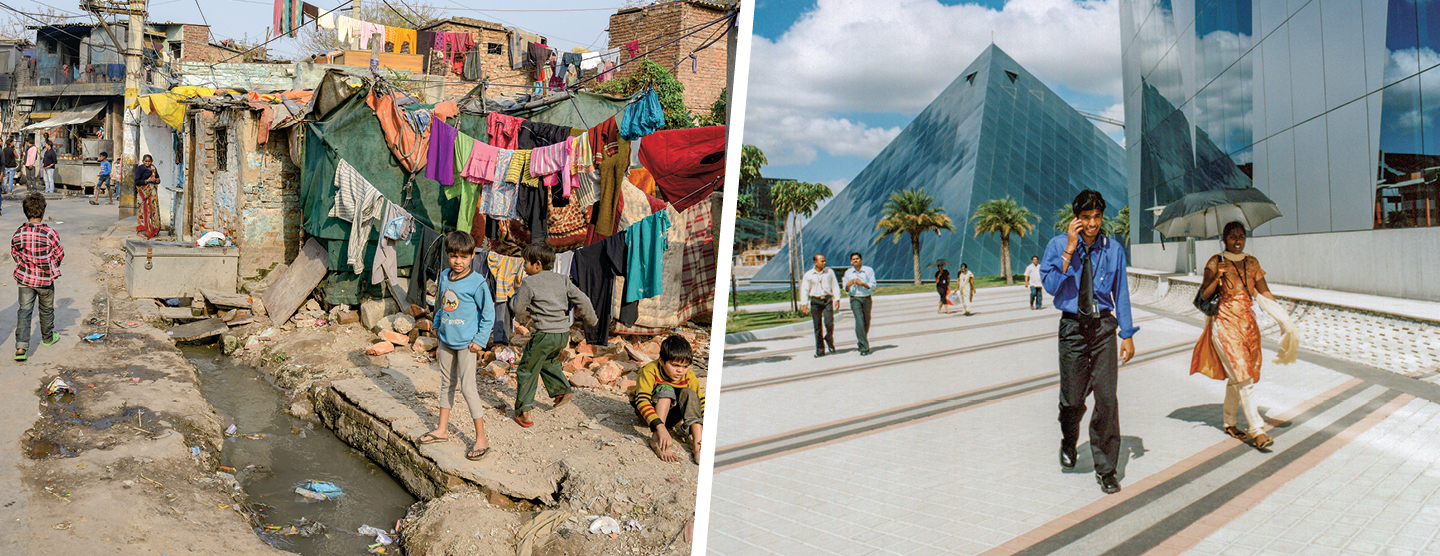Down a winding alleyway strewn with trash and up a narrow staircase is the small two-room apartment where 14-year-old Sushmita lives in an overcrowded neighborhood of Delhi, one of India’s largest cities.
Her family is part of the huge wave of Indians who’ve moved from impoverished rural villages to the city in search of better lives. Yet Sushmita’s family still lives day to day. Her parents both work, and they struggle to make ends meet. Sometimes there’s no electricity. The apartment has one bed, which Sushmita* and her brother share. Her parents and older sister sleep on the floor next to them in the cramped bedroom.
Just 12 miles away, on the eastern side of the city, 14-year-old Anirudh Joshi lives in another world. His neighborhood is known for its parks, a nearby shopping mall, and convenient access to Delhi’s subway system. His family’s apartment is situated on a quiet, well-kept street and boasts an air conditioner, a flat-screen TV, and a family computer. Anirudh has his own cellphone and likes to play cricket with his friends after school.
“I have everything provided for me,” he says.
Anirudh and Sushmita reflect the two sides of India today. On the one hand, India’s economy has boomed in the past 25 years, and hundreds of millions of people have been lifted out of poverty. Last year, a British think tank predicted that by the end of 2018, India’s economy will surpass both France’s and the United Kingdom’s in size, making it the fifth-largest in the world.
But at the same time, millions remain stuck in the old India, a place that’s very poor, uneducated, and trying to make the transition to modernity. About 20 percent of the population still lives on less than $2 a day.
“India has come a long, long way when it comes to its economy,” says Anubhav Gupta, an India expert at the Asia Society in New York, “but it still has a long way to go.”
Down a winding alleyway covered with trash and up a narrow staircase is a small two-room apartment. This is where 14-year-old Sushmita lives in an overcrowded neighborhood of Delhi. It’s one of India’s largest cities.
Her family is part of the huge wave of Indians who’ve moved from poor rural villages to the city in search of better lives. Yet Sushmita’s family still lives day to day. Her parents both work, and they struggle to make ends meet. Sometimes there’s no electricity. The apartment has one bed, which Sushmita and her brother share. Her parents and older sister sleep on the floor next to them in the cramped bedroom.
Just 12 miles away, on the eastern side of the city, 14-year-old Anirudh Joshi lives in another world. His neighborhood is known for its parks, a nearby shopping mall, and convenient access to Delhi’s subway system. His family’s apartment is situated on a quiet, well-kept street. They have an air conditioner, a flat-screen TV, and a family computer. Anirudh has his own cellphone and likes to play cricket with his friends after school.
“I have everything provided for me,” he says.
Anirudh and Sushmita reflect the two sides of India today. On the one hand, India’s economy has boomed in the past 25 years. Hundreds of millions of people have been lifted out of poverty. Last year, a British think tank predicted that by the end of 2018, India’s economy will surpass both France’s and the United Kingdom’s in size. That would make it the fifth-largest in the world.
But at the same time, millions remain stuck in the old India. For them, it’s a place that’s very poor, uneducated, and trying to make the transition to modernity. About 20 percent of the population still lives on less than $2 a day.
“India has come a long, long way when it comes to its economy,” says Anubhav Gupta, an India expert at the Asia Society in New York, “but it still has a long way to go.”

